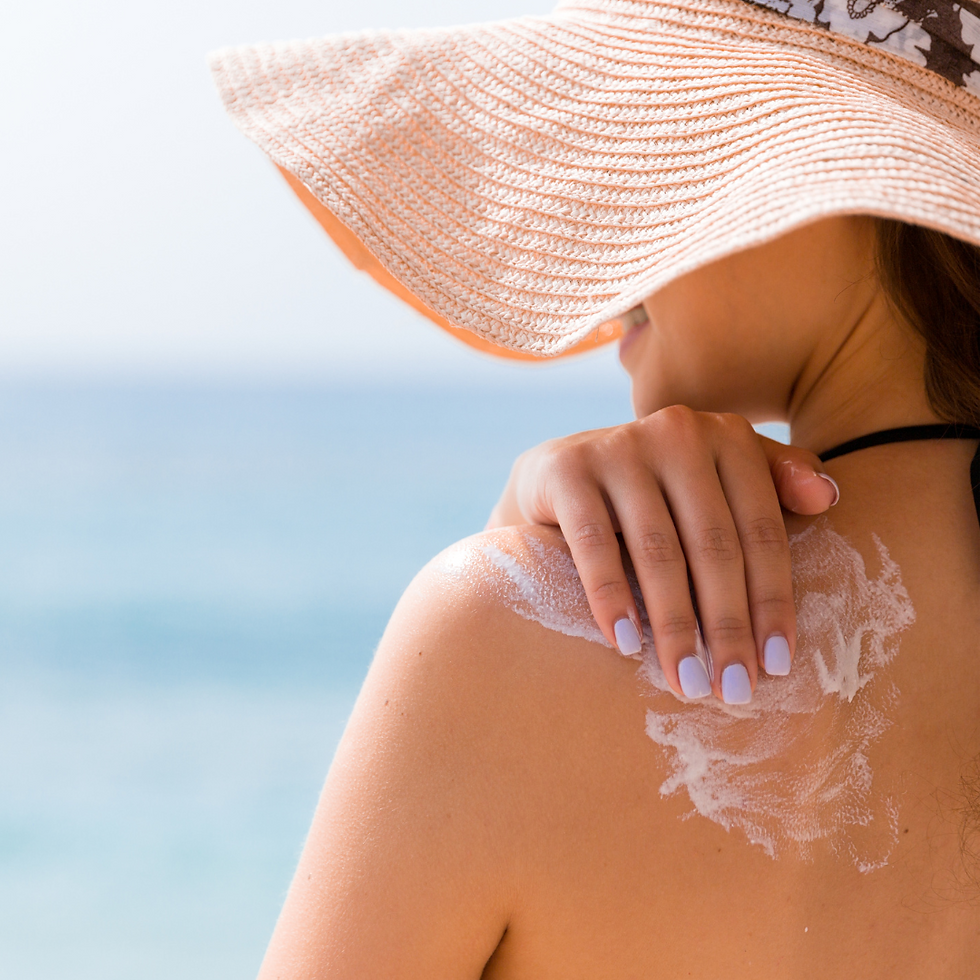
Understanding SPF
Sun Protection Factor (SPF) is a measure of how well a sunscreen will protect your skin from UVB rays, the kind of radiation that causes sunburn and contributes to skin cancer. Here’s a quick breakdown:
SPF 15 blocks about 93% of UVB rays.
SPF 30 blocks about 97%.
SPF 50 blocks about 98%.
Higher SPF numbers offer more protection, but no sunscreen can block 100% of UVB rays.

How to Choose the Right SPF
Daily Use: For everyday use, an SPF of 30 is generally sufficient. This level provides ample protection for incidental sun exposure, such as commuting or running errands.
Extended Outdoor Activities: If you’re spending extended periods outdoors, especially during peak sun hours (10 AM - 4 PM), consider using SPF 50.
Skin Type Matters: Fair-skinned individuals or those with a history of skin cancer should use higher SPF for extra protection.

Application Tips
Apply Generously: Most people don't apply enough sunscreen. Use about an ounce (a shot glass full) to cover your entire body.
Don’t Forget Key Areas: Apply to often-missed spots like the ears, back of the neck, tops of feet, and along the hairline.
Reapply Regularly: Reapply every two hours, and immediately after swimming, sweating, or towel drying.
Layering Products: If using other skincare products, apply sunscreen as the final step in your routine, after moisturiser and before makeup.
Broad-Spectrum Protection
Ensure your sunscreen is labelled "broad-spectrum," which means it protects against both UVA and UVB rays. UVA rays penetrate deeper into the skin, causing aging and long-term damage, while UVB rays are the main cause of sunburn.

Fernblock: A Game-Changer in Sun Protection
Fernblock, derived from the Polypodium leucotomos fern, is a powerful ingredient that adds an extra layer of protection to your sunscreen. Here’s how Fernblock enhances your SPF:
Antioxidant Powerhouse: Fernblock is rich in antioxidants, which help neutralize free radicals caused by UV exposure. This reduces the risk of long-term skin damage and premature aging.
DNA Protection: It helps protect the DNA in skin cells from UV-induced damage, which is crucial in preventing mutations that can lead to skin cancer.
Anti-Inflammatory Properties: Fernblock reduces inflammation caused by UV exposure, which can lead to less redness and irritation after sun exposure.
Enhancing Skin’s Resilience: Regular use of products containing Fernblock can boost your skin's overall resilience against environmental stressors, making it an excellent addition to your sun protection routine.

Incorporating Fernblock into Your Routine
Fernblock can be found in various topical sunscreens and oral supplements. For optimal protection:
Topical Use: Look for sunscreens that include Fernblock in their ingredient list. Apply it just like any other sunscreen.
Oral Supplements: Some products offer Fernblock in pill form, which can provide an additional layer of protection from the inside out. These should complement, not replace, topical sunscreen.
Proper sun protection is a cornerstone of healthy skin care. By understanding SPF, applying it correctly, and incorporating advanced ingredients like Fernblock, you can significantly reduce your risk of sunburn, premature aging, and skin cancer. Make sunscreen a daily habit, and enjoy the sun safely!

Comments